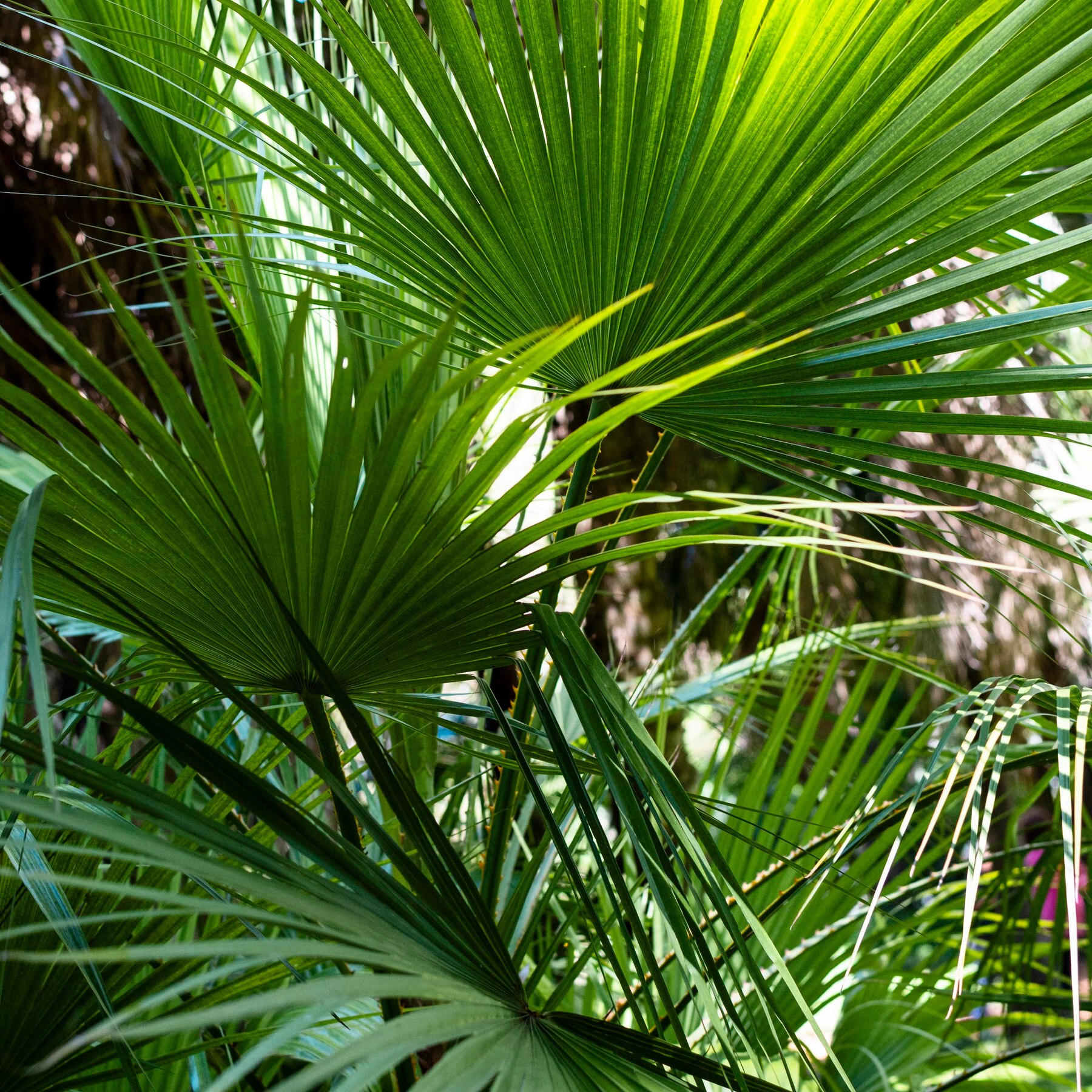
Palmetto Palm
Sabal palmetto
Basic Information
🌿 Family: Arecaceae🗺️ Zone: 8-11
Other Names:
- Cabbage Palm
🌡️ Ideal Temperature : 70°F – 95°F
🔥 Heat Tolerance: Up to 110°F
❄️ Cold Tolerance: Down to 10°F
🌱 Type: Perennial
Layers
- Canopy
Functions
- Edible
- Medicinal
- Wildlife Attractor
- Windbreaker
- Erosion Control
Pests
No pests associated with this plant.
Description
The Palmetto Palm (*Sabal palmetto*), also known as the Cabbage Palm, is native to the southeastern United States. It can reach heights of up to 20 meters (65 feet) with a sturdy trunk and a canopy of fan-shaped fronds. The tree produces small, white flowers that develop into black drupes.
🌞💧 **Sun and Water Requirements:**
Prefers full sun but can tolerate partial shade. Highly drought-tolerant once established but benefits from regular watering during prolonged dry periods.
✂️🫘 **Methods to Propagate:**
Propagation is primarily through seeds, which should be cleaned and planted in moist soil. Germination can take several months.
🧑🌾👩🌾 **When to Harvest:**
The terminal bud, known as the "cabbage," can be harvested for consumption, but this process kills the tree. Berries can be collected when ripe for propagation or wildlife feed.
Purpose
- Edible: The terminal bud is edible and known as "heart of palm."
- Medicinal: Used traditionally to treat headaches and fever.
- Wildlife Attractor: Provides food and habitat for birds and other wildlife.
- Windbreaker: Its sturdy structure makes it effective in reducing wind speed in landscapes.
- Erosion Control: The root system helps stabilize soil in coastal areas.